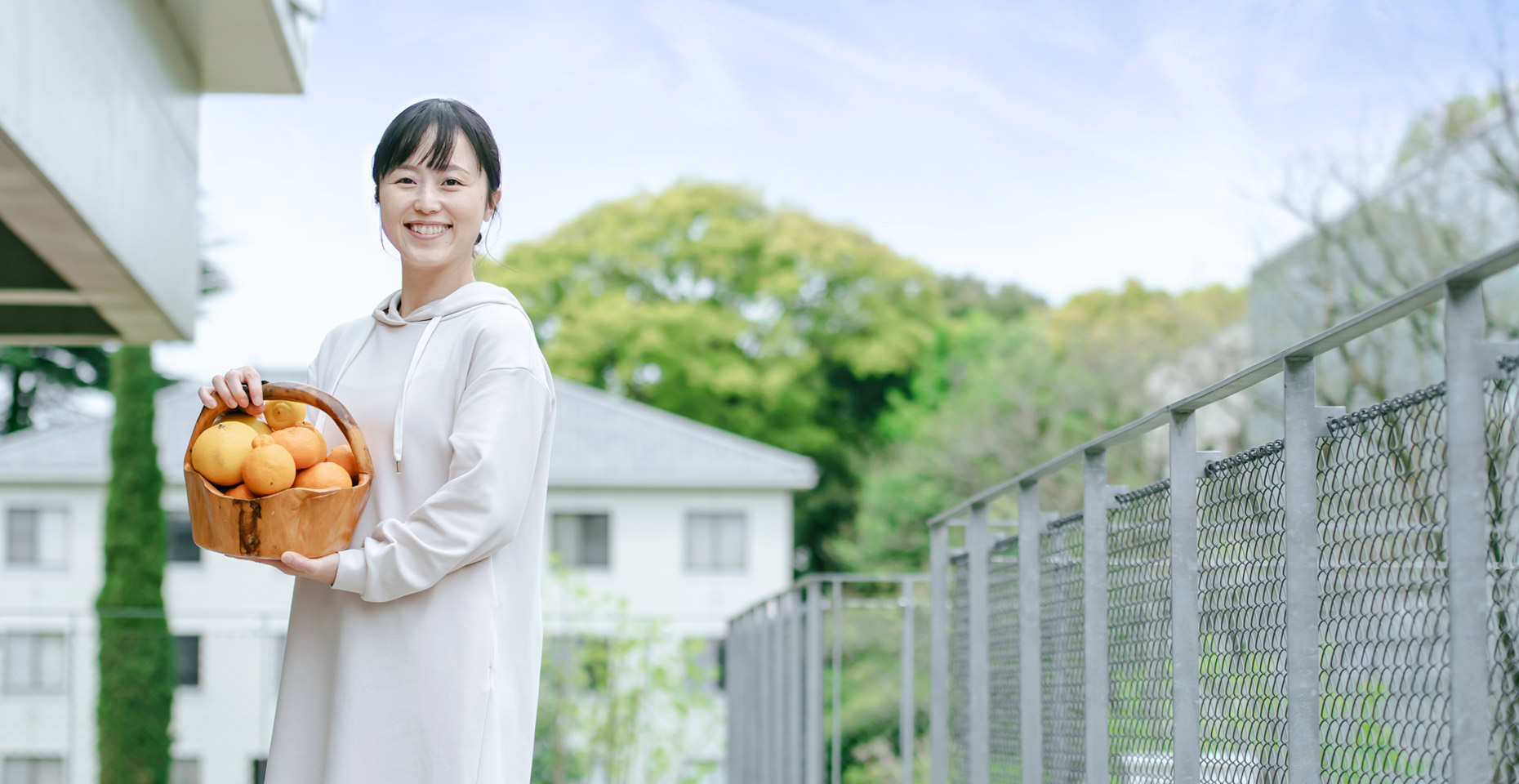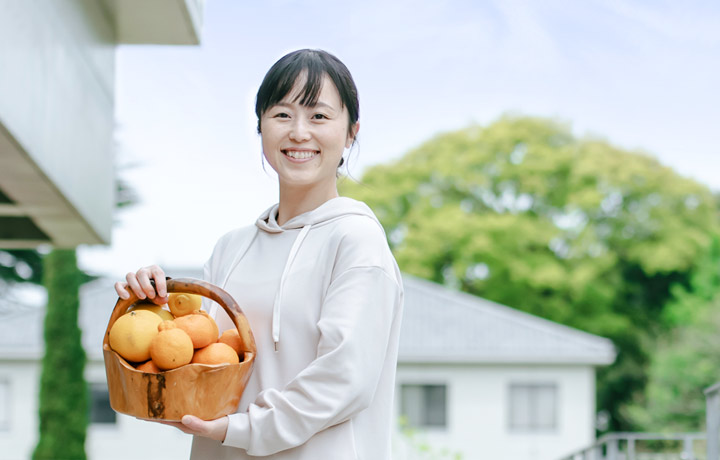“Sweet fruits, sour fruits, and those rich in high-functional components. With the introduction of appealing new fruit cultivars one after another in grocery stores, I believe our lives would grow even more abundant,” shares Associate Professor Mai Minamikawa of Chiba University’s Graduate School of Horticulture.
Associate Professor Minamikawa leads pioneering research aimed at enhancing the efficiency of fruit tree breeding, a pursuit synonymous with enriching variety. Her approach is distinguished by its multidisciplinary foundation, harnessing the potential of molecular genetics, statistical genetics, and data science, including machine learning. This innovative methodology for fruit tree breeding garnered high acclaim, earning the ‘Encouragement Award’ from the Japanese Society of Breeding.
In a conversation with Associate Professor Minamikawa, who places deep value on human connections, we delve into her insights regarding research and education.
From a plant enthusiast to an expert in fruit tree breeding
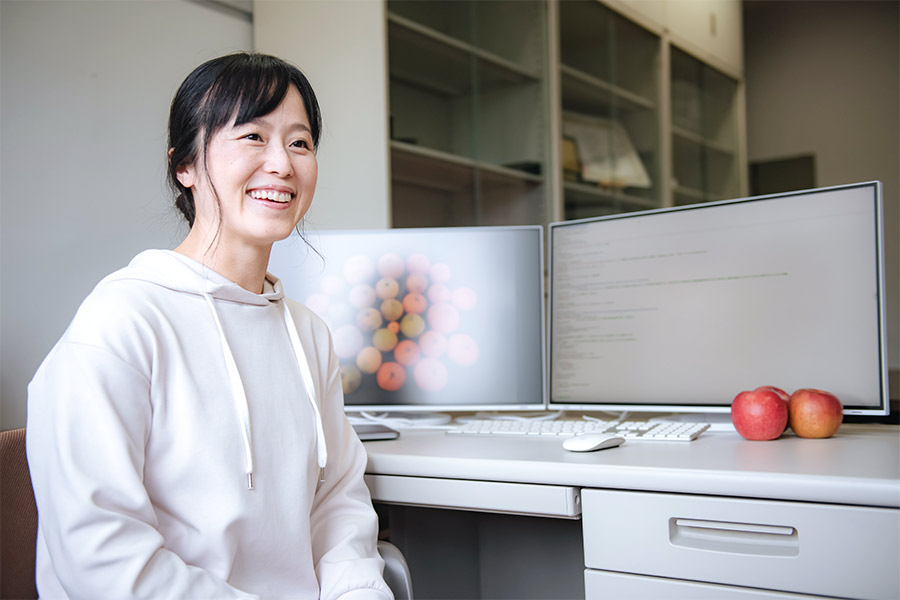
――Please share with us what led you to become a researcher.
I have held a deep fascination for plants since my early years. Growing up in diverse roses in our home garden, I often wondered, “Why do they come in so many different colors?” and “What’s the secret behind their captivating fragrances?” These childhood experiences fueled my intrigue with the botanical world. Guided by this passion, I embarked on my academic journey by enrolling in Chiba University’s Faculty of Horticulture. As my university years unfolded, a revelation shook me—the creation of a blue rose through genetic recombination. This remarkable news triggered a profound interest in the field of ‘breeding,’ where the artistry of crafting entirely new plant species is woven. Since that moment, I have dedicated myself to unwavering research aimed at improving the efficiency of fruit tree breeding.
――What prompted your passion for fruit tree breeding?
Currently, fruit tree breeding predominantly relies on the “cross-breeding method.” This approach involves selecting fruit trees with desired traits from the offspring that arise through the cross-pollination of distinct varieties. However, fruit trees take a long time to bear fruit, and their stature often stands tall, limiting the number of evaluative trees. Consequently, breeding fruit trees requires a considerable time investment, and the yield of trees bearing fruit that exceeds the selection criteria tends to be modest. Citrus trees, for example, take an average of 22 years to develop a new citrus cultivar. Therefore, my impetus was to improve the efficiency of the breeding process, shorten the breeding timeline, and contribute to the efficient cultivation of novel fruit varieties.
During my student days, I held a deep fascination for plants within the Rosaceae family. Inspired by this affinity, I embarked on research into fruit tree breeding, focusing on the apple―a prominent member of this botanical family―as my subject of exploration. I immersed myself in research to elucidate the intricate mechanisms of “self-incompatibility” using molecular genetic techniques.
Apples and pears, due to the nature of “self-incompatibility,” face limitations in cross-breeding when attempting to mate individuals of the same variety. This innate characteristic places considerable constraints on breeding efforts. For the first time in history, however, we discovered a large number of pollen-side gene candidates involved in this phenomenon of self-incompatibility in apples. This significant milestone marked a pivotal step forward, providing a foundation to control self-incompatibility and unlock the potential for unrestricted cross-breeding.
Molecular Genetics, Statistical Genetics, and Data Science: Striving for enhanced breeding efficiency from multifaceted perspectives
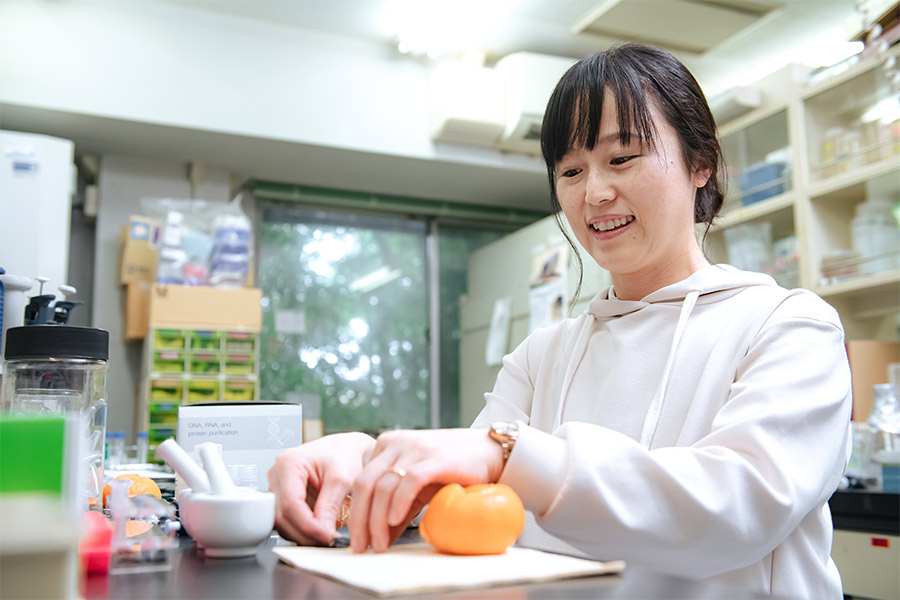
――After that, how did you venture into research in other fields?
After obtaining my doctoral degree, I aspired to open up a novel path in breeding research. It was during this phase that I encountered Dr. Hiroyoshi Iwata of the University of Tokyo Graduate School of Agricultural and Life Science—a pivotal turning point for me.
In conversations with Dr. Iwata, I discovered that research and practical application of a breeding technique called ‘genomic selection (GS)*’ were advancing in the field of dairy cows at that time. This method, a subset of ‘genomic breeding,’ utilizes genome information to efficiently improve breeds. Recognizing the potential, I felt that if GS could be applied to fruit trees, it might hold the potential to predict the forthcoming fruit characteristics at the budding stage and identify promising individuals in the early phases. With this inspiration, I initiated my research into GS under Dr. Iwata’s guidance.
I then identified an optimal GS framework for fruit trees. When this approach was adapted to citrus, I unveiled its potential to predict attributes like fruit weight, color, and peelability with high accuracy during the budding stage. The ability to identify superior individuals in the early stages enhances the pool of candidates significantly. In the future, I envision the capability to efficiently and swiftly cultivate new varieties that meet the demands of consumers, breeders, and fruit growers.
*Genomic selection involves analyzing the genomic information of a certain organism, predicting individuals with excellent traits, and selecting them at an early stage. This approach facilitates the efficient cultivation of organisms with desirable traits in breeding, encompassing predictions for traits involving numerous genes.

――Indeed, this holds the potential to significantly enhance the efficiency of breeding
To further improve the precision of GS for practical implementation, a substantial volume of genomic information and traits data, such as peelability and hardness of citrus fruits, is imperative. Yet, the reality of breeding sites involves a handful of breeders manually assessing the characteristics of each fruit, thereby posing challenges in swiftly collecting abundant trait information in a short period of time.
We have succeeded in demonstrating the utilization of machine learning to predict the characteristics of citrus fruits from cross-sectional images. What’s even more promising is that these images can be automatically captured, enabling the efficient and substantial collection of fruit trait information directly from the cross-sectional images. This innovation holds the potential to improve the accuracy of GS and is poised to contribute to significant progress in the field.
――You are indeed improving breeding efficiency through a multifaceted approach.
In the field of breeding, it’s relatively rare to find researchers engaged in cross-disciplinary studies. Venturing into a new domain distinct from one’s own background presents formidable challenges. The research involving GS and machine learning requires proficiency in programming and mathematics, areas I was unfamiliar with, making the journey quite demanding.
Nonetheless, it is very attractive to comprehensively understand the genetic system of plants through multidimensional lends. The ability to achieve such integration is undeniably captivating. This approach holds great significance, not only for the advancement of breeding science but also for the broader field of horticultural science.
Close communication with the breeders is the key to success
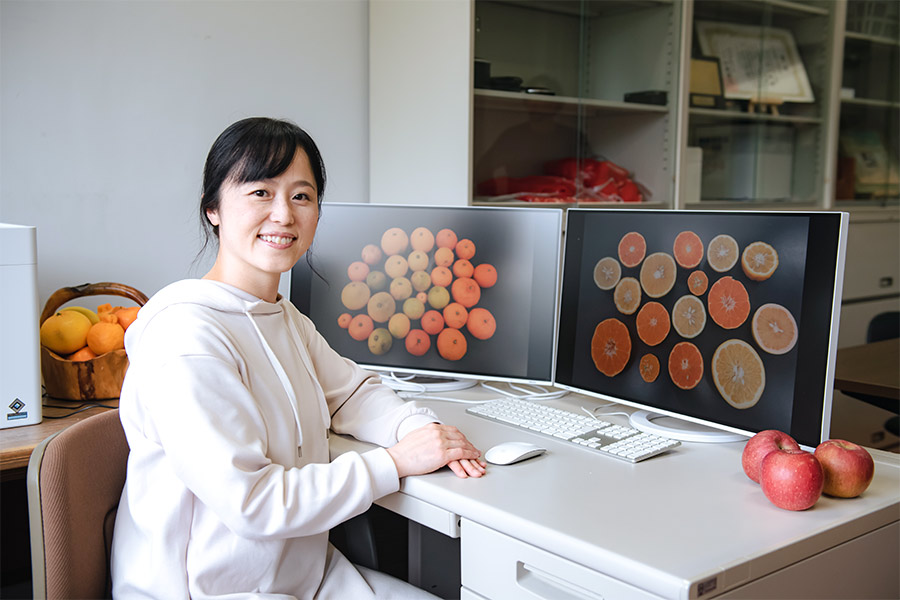
――What principles do you value as you advance your research?
In the course of advancing my research, I place great importance on the ‘needs of breeders,’ ensuring the seamless integration of GS into practical breeding contexts. This approach stems from my strong emphasis on maintaining relationships with breeders and my aspiration to comprehend the ever-evolving conditions and demands of the actual breeding sites.
In addition, the collection of experimental data necessary for GS in the realm of fruit trees poses considerable challenges. Hence, collaboration with the breeding community is indispensable. My goal is to bridge the worlds of ‘academic breeding science’ and the ‘breeding field,’ with the ultimate goal of the practical implementation of GS in real-world settings. Concurrently, I aim to leverage the wisdom of the field to propel the development of GS. To achieve these ambitions, I remain committed to ongoing communication with breeders, forming a symbiotic partnership that holds the promise of progress both in academic knowledge and practical application.
――What kind of research would you like to focus on in the future?
In the upcoming years, I would like to pursue research that employs an interdisciplinary approach, integrating the expertise in molecular genetics, statistical genetics, and data science that I have cultivated thus far. I anticipate that innovative research outcomes will emerge from the dynamic interplay among these diverse fields.
Additionally, I place great importance on collaborative research efforts. Currently, I am involved in joint research with institutions like National Agriculture and Food Research Organization, domestic companies, and international universities. Moving forward, I look forward to cooperating with leading researchers in machine learning, image analysis, as well as experts in plant cultivation techniques. Furthermore, I am eager to actively connect with breeders who share an interest in genomic breeding.
Creating an Environment for Balancing Life Events and Research Pursuits
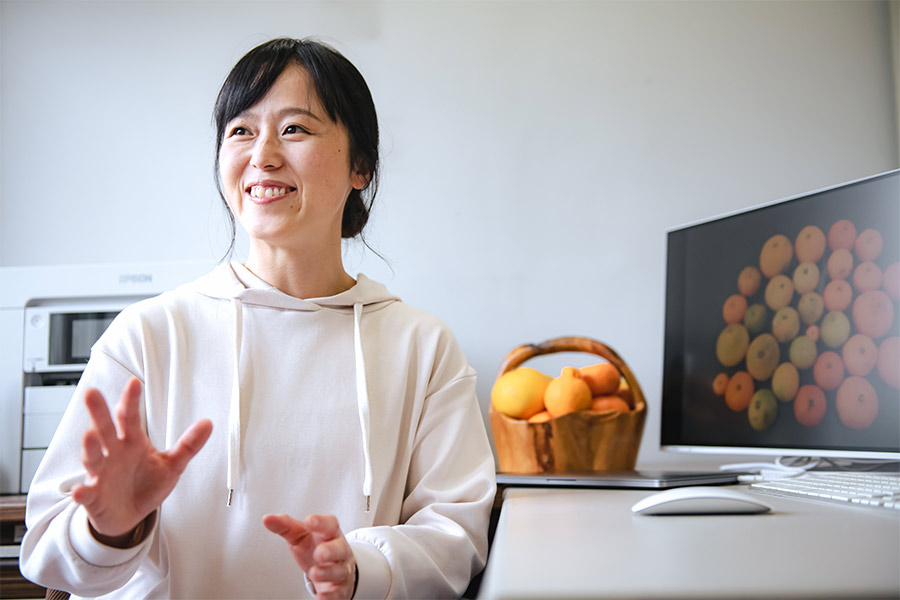
――As an associate professor, are there any particular aspects you focus on while engaging in student education?
Within my lab, fostering effective communication with students holds great importance to me. By cultivating smoother communication, I can ensure effective guidance and support for students, as well as encourage the emergence of fresh scientific perspectives that can blossom into new ideas. It would be gratifying to collaborate in research while respecting and nurturing students’ individual interests, and together, find joy in the process.
――Dialogue holds a significant place not only in research but also in education. Are there any other aspects you are currently focusing on?
I aim to explore and suggest ways to effectively balance life events and research.
Personally, I have taken maternity and childcare leave twice. During those times, I had concerns about whether I could continue my research. However, thanks to the support of those around me, I have been able to persist in my research journey. Through these experiences, I have come to strongly feel that I am now in the role of supporting students and young researchers.
While my individual capacity might be limited, I aspire to collaborate with the professors and staff at Chiba University to put forth our best effort. Together, we aim to create an environment where students and researchers can enjoy both their personal life events and their research endeavors.
――Finally, please give a message to students
If you are interested in breeding methods that utilize the potential of big data, such as genomic information, let’s work together! Why not delve into the world of interdisciplinary exploration, combining the prowess of big data analysis technology with gene analysis techniques? This approach will offer you a multifaceted perspective on the genetic systems of plants. Join me on this exciting journey of discovery and innovation!
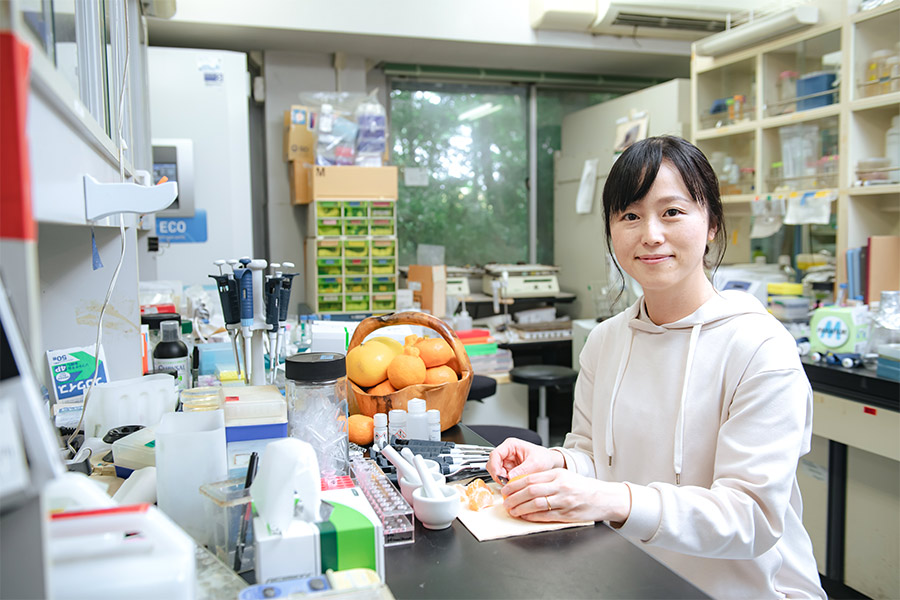
Recommend
-
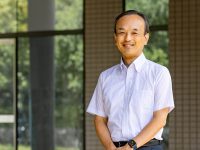
Children-centered support and school operations: On the occasion of the founding of the Children and Families Agency
2023.02.15
-
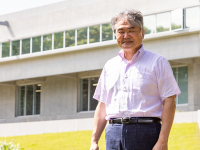
The reciprocity of life: The interactive relationships between people, plants, and the environment
2023.05.19
-

Designing Mobility: A Gentle Force in Linking People and Society
2024.02.26


